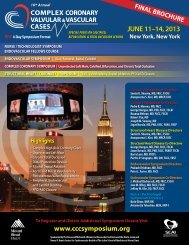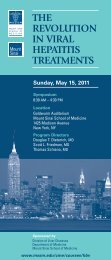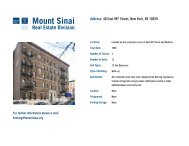Martha Stewart Center for Living Newsletter - Mount Sinai Hospital
Martha Stewart Center for Living Newsletter - Mount Sinai Hospital
Martha Stewart Center for Living Newsletter - Mount Sinai Hospital
Create successful ePaper yourself
Turn your PDF publications into a flip-book with our unique Google optimized e-Paper software.
“The hallmark of successful aging is getting what<br />
you want out of life and doing the things you<br />
love to do no matter what your age.”<br />
<strong>Martha</strong> <strong>Stewart</strong><br />
Fall 2007<br />
<strong>Mount</strong> <strong>Sinai</strong> and<br />
<strong>Martha</strong> <strong>Stewart</strong> craft a<br />
new vision <strong>for</strong> healthy aging<br />
The first baby boomers turned 60 last year, jumpstarting<br />
a phenomenon that will build momentum<br />
and challenge health care providers <strong>for</strong><br />
decades to come. Meanwhile, unprecedented<br />
medical advances are extending life expectancy<br />
and heightening expectations of health and<br />
happiness <strong>for</strong> that longer lifespan. At the same<br />
time, more and more baby boomers are caring<br />
<strong>for</strong> aging parents and thus glimpsing their<br />
own futures. These converging trends have created<br />
a unique opportunity to challenge the way<br />
we think about aging.<br />
<strong>Martha</strong> <strong>Stewart</strong> is joining <strong>for</strong>ces with <strong>Mount</strong> <strong>Sinai</strong> Medical<br />
<strong>Center</strong> to seize this opportunity. Opened at the end of<br />
November, the <strong>Martha</strong> <strong>Stewart</strong> <strong>Center</strong> <strong>for</strong> <strong>Living</strong> will provide<br />
a new home <strong>for</strong> <strong>Mount</strong> <strong>Sinai</strong>’s outpatient geriatrics<br />
services and create a pioneering new model <strong>for</strong> the practice<br />
of medicine.<br />
Two generations, one <strong>Center</strong><br />
One generation looking ahead to longer life, the other<br />
already coping with that longevity: both demand care and<br />
attention. “With the aging of the baby boomer generation,<br />
two areas are crying out <strong>for</strong> innovation in medical<br />
Continued on Page 5<br />
Top: Albert L. Siu, MD; Peter May; <strong>Martha</strong> <strong>Stewart</strong>; Brent<br />
Ridge, MD; Kenneth L. Davis, MD; Audrey K. Chun, MD<br />
and Chien Chung Pei<br />
Bottom: <strong>Martha</strong> <strong>Stewart</strong>, medical students and doctors<br />
at The <strong>Martha</strong> Show, October 10, 2007
Brookdale Department of Geriatrics<br />
and Adult Development<br />
The <strong>Mount</strong> <strong>Sinai</strong> School of Medicine<br />
One Gustave L. Levy Place<br />
Box 1070, New York, NY 10029<br />
Tel. 212-241-5561, Fax 212-860-9737<br />
Albert L. Siu, MD, MSPH<br />
Ellen and Howard C. Katz Chairman’s Chair<br />
Brookdale Department of Geriatrics<br />
and Adult Development<br />
<strong>Mount</strong> <strong>Sinai</strong> School of Medicine<br />
Director of the New York Geriatric<br />
Research Education and Clinical <strong>Center</strong> at<br />
the James J. Peters VA Medical <strong>Center</strong><br />
Rosanne M. Leipzig, MD, PhD<br />
Vice Chair <strong>for</strong> Education<br />
Gerald and Mary Ellen Ritter Professor of<br />
Geriatric Medicine<br />
Diane E. Meier, MD<br />
Director, <strong>Center</strong> to Advance Palliative Care<br />
Director, Hertzberg Palliative Care Institute<br />
Catherine Gaisman Professor of Medical Ethics<br />
R. Sean Morrison, MD<br />
Vice Chair <strong>for</strong> Research<br />
Director, National Palliative Care Research <strong>Center</strong><br />
Director of Research,<br />
Hertzberg Palliative Care Institute<br />
Hermann Merkin Professor of Palliative Care<br />
Audrey K. Chun, MD<br />
Medical Director, <strong>Martha</strong> <strong>Stewart</strong> <strong>Center</strong> <strong>for</strong> <strong>Living</strong><br />
Beatriz Korc, MD, PhD<br />
Director, Clinical Services<br />
Co-Director, Mobile ACE Unit<br />
Jeffrey Farber, MD<br />
Co-Director, Mobile ACE Unit<br />
Marilyn W. de Leo<br />
Director, Development<br />
One Gustave L. Levy Place, Box 1049/1050<br />
New York, New York 10029<br />
212-659-1599<br />
marilyn.deleo@mountsinai.org<br />
<strong>Martha</strong> <strong>Stewart</strong> <strong>Center</strong> <strong>for</strong> <strong>Living</strong><br />
Phyllis and Lee Coffey Geriatrics Associates<br />
1440 Madison Avenue at 99th Street<br />
New York, New York 10029<br />
212-659-8552<br />
www.mssm.edu/patient_care/coffey<br />
Lilian and Benjamin Hertzberg<br />
Palliative Care Institute<br />
One Gustave L. Levy Place, Box 1070,<br />
New York, New York 10029<br />
www.mssm.edu/palliative<br />
212-241-1446<br />
Written and Edited by Rosemary L. McGinn<br />
Graphic Design by <strong>Martha</strong> L. Quintero<br />
“Geriatrics <strong>for</strong> non-geriatricians”<br />
A revolutionary new way to<br />
pass the torch<br />
America’s supply of geriatricians is dwindling<br />
even as the over-60 population is set to skyrocket<br />
over the next decade. But the challenges of caring<br />
<strong>for</strong> the aging go beyond quantity: these “new<br />
seniors” will look very different from those of<br />
decades past. Rosanne M. Leipzig, MD, PhD, Vice<br />
Chair <strong>for</strong> Education of the Brookdale Department<br />
of Geriatrics and Adult Development, explains: Rosanne M. Leipzig, MD, PhD<br />
“We’ve never had an older generation like this<br />
one, or the next one. People didn’t make it to this age, living a third of<br />
their lives in retirement.” <strong>Mount</strong> <strong>Sinai</strong> is leading the way in crafting<br />
creative strategies to trans<strong>for</strong>m patient care during and beyond these<br />
changing times.<br />
The first and most creative<br />
<strong>Mount</strong> <strong>Sinai</strong> teaches more people about geriatrics than any other medical school in the<br />
country. Although it hosts one of the country’s top geriatrics fellowship programs, most<br />
of <strong>Mount</strong> <strong>Sinai</strong>’s “students” of geriatrics are not geriatricians nor do they plan to enter the<br />
field. Instead, they are the beneficiaries of <strong>Mount</strong> <strong>Sinai</strong>’s innovative “geriatrics <strong>for</strong> the nongeriatrician”<br />
approach.<br />
That revolutionary strategy starts with the medical school. <strong>Mount</strong> <strong>Sinai</strong> is one of only a<br />
handful of medical schools in the country that require a month-long rotation in geriatric<br />
medicine <strong>for</strong> every student. Geriatrics is infused throughout the medical school experience,<br />
from the first year through the last, “from the minute they arrive”, says Dr. Leipzig. The<br />
Seniors as Mentors Program matches every incoming student with an older <strong>Mount</strong> <strong>Sinai</strong><br />
patient. Special interest groups, research projects, and a month-long clerkship integrated<br />
with eight weeks of internal medicine – all welcome students regardless of their specialty<br />
plans.<br />
The revolution continues with pioneering programs <strong>for</strong> practicing physicians, such as a<br />
unique “mini-fellowship” program that targets non-geriatricians who teach in residency<br />
programs or medical schools. As part of the program, <strong>Mount</strong> <strong>Sinai</strong> faculty mentor the<br />
participants long after they return to their regular duties at home. With 48 slots, each weeklong<br />
rotation, or session, draws applicants from all around the country and often cannot<br />
accommodate the demand. This tuition-free program is supported by a one-time, six-year<br />
grant from the Donald W. Reynolds Foundation that concludes in 2010, and the department<br />
is already working on ways to ensure its continuation.<br />
Taking the model national<br />
Dr. Leipzig is working to take this “geriatrics <strong>for</strong> non-geriatricians” approach to a national<br />
level, traveling around the country to advise other medical schools on improving their own<br />
programming. “We’re leading the charge to develop graduation competencies in geriatrics<br />
<strong>for</strong> every medical student – what every student must demonstrate when caring <strong>for</strong> an older<br />
adult.” This strategy includes methods <strong>for</strong> teaching and assessing these competencies, as<br />
well as adding relevant questions to the board exams they must pass to be licensed. The big<br />
picture entails working with national associations to develop similar competencies <strong>for</strong> all<br />
residency and fellowship programs and <strong>for</strong> practicing physicians.<br />
“Whether they plan to become ophthalmologists or orthopedists,” Dr. Leipzig adds, “all of<br />
tomorrow’s doctors will work with growing numbers of older patients, and doctors in<br />
every specialty need to be prepared.”
The <strong>Martha</strong> <strong>Stewart</strong> <strong>Center</strong> <strong>for</strong> <strong>Living</strong><br />
Pioneering an international model<br />
of healthy aging<br />
The <strong>Martha</strong> <strong>Stewart</strong> <strong>Center</strong> <strong>for</strong> <strong>Living</strong> at <strong>Mount</strong> <strong>Sinai</strong> will do<br />
much more than provide services to patients who are growing<br />
older. Its mission is nothing less than changing the way we look<br />
at, think about, and experience aging – on a global scale. The<br />
<strong>Center</strong> will tap the unique resources of both Ms. <strong>Stewart</strong> and<br />
<strong>Mount</strong> <strong>Sinai</strong> to develop an array of interdependent strategies<br />
<strong>for</strong> coping with the shifting demographics, economics, and<br />
social attitudes linked to an aging world population. Patricia Bloom, MD Audrey K. Chun, MD<br />
Radical change on the horizon<br />
A radical trans<strong>for</strong>mation in the face of aging is just over the<br />
horizon as baby boomers enter their 60s. The process will subject<br />
our health care system to enormous pressures, not just<br />
because of this cohort’s sheer size but also because its members<br />
tend to be vocal and very engaged with their health care.<br />
According to <strong>Mount</strong> <strong>Sinai</strong>’s experts, we’re just not ready. “None<br />
of us are prepared <strong>for</strong> the monumental societal burden that<br />
awaits us,” says Brent Ridge, MD, MBA, Assistant Clinical<br />
Professor of Geriatrics and Adult Development at <strong>Mount</strong> <strong>Sinai</strong><br />
Medical School and Vice President <strong>for</strong> Healthy <strong>Living</strong> at <strong>Martha</strong><br />
<strong>Stewart</strong> <strong>Living</strong> Omnimedia. “The current supply of geriatricians<br />
is dwindling, negative stereotypes of aging abound, and, at the<br />
same time, many of us are starting to experience the pressures<br />
of providing care <strong>for</strong> aging parents and other loved ones.”<br />
The <strong>Martha</strong> <strong>Stewart</strong> <strong>Center</strong> <strong>for</strong> <strong>Living</strong> will serve as a laboratory<br />
and change agent <strong>for</strong> developing, testing, and disseminating<br />
sustainable models <strong>for</strong> practice, business, and education that<br />
can be used around the world to change the face of aging.<br />
Collaboration and education<br />
The <strong>Martha</strong> <strong>Stewart</strong> <strong>Center</strong> <strong>for</strong> <strong>Living</strong> will provide a home <strong>for</strong><br />
the Phyllis and Lee Coffey Geriatrics Associates Outpatient<br />
Practice, which will play a key role in crafting <strong>Mount</strong> <strong>Sinai</strong>’s new<br />
approach to care <strong>for</strong> older adults. “One of the great features of<br />
the Coffey Practice at <strong>Mount</strong> <strong>Sinai</strong> is that we have 3,000 patients<br />
to help us test these ideas and develop these initiatives,” Dr.<br />
Ridge explains. “Very few other places in the country have this<br />
concentration of older patients.” The Visiting Doctors program,<br />
which brings medical care to homebound patients, adds another<br />
thousand patients to the pool.<br />
Creating a paradigm shift in perceptions of aging will also<br />
require rethinking and redesigning the education of patients,<br />
caregivers, health care providers, and the community. The<br />
<strong>Martha</strong> <strong>Stewart</strong> <strong>Center</strong> will provide common ground <strong>for</strong> creating<br />
curricula and training programs that can be adapted <strong>for</strong> use<br />
in any health care setting. “The idea is that we’ll develop these<br />
models not just <strong>for</strong> people who are <strong>for</strong>tunate enough to be in<br />
New York and can come to <strong>Mount</strong> <strong>Sinai</strong>, but also <strong>for</strong> those<br />
across the country and around the world,” says Dr. Ridge.<br />
Audrey K. Chun, MD, directs the Coffey Geriatrics Practice and<br />
is Assistant Professor of Geriatrics and Adult Development. “We<br />
haven’t been able to do as much education as we’d like <strong>for</strong> the<br />
outpatient setting,” Dr. Chun notes. “Now we can expand our<br />
ef<strong>for</strong>ts to educate patients about healthy aging and disease prevention.”<br />
Just as importantly, however, the <strong>Martha</strong> <strong>Stewart</strong><br />
<strong>Center</strong> will provide education and support <strong>for</strong> patients who<br />
already have chronic illness – as well as their caregivers.<br />
Much of the education and training at the <strong>Martha</strong> <strong>Stewart</strong><br />
<strong>Center</strong> <strong>for</strong> <strong>Living</strong> will be supported by contributions of funding<br />
and staffing from the New York Junior League.<br />
Innovating and integrating<br />
Another key strategy is to offer holistic or integrative health<br />
modalities as an adjunct to traditional geriatric medicine interventions.<br />
The Coffey Practice Senior Health Spa has provided a<br />
range of complementary and integrative therapies to patients<br />
and community members <strong>for</strong> more than two years, including<br />
mindfulness-based stress reduction, tai chi, and yoga.<br />
“These therapies have a somewhat different philosophical<br />
basis,” explains Patricia Bloom, MD, Director of Integrative<br />
Health <strong>for</strong> the <strong>Martha</strong> <strong>Stewart</strong> <strong>Center</strong> and Associate Clinical<br />
Professor of Geriatrics and Internal Medicine. “The therapist is<br />
more of a partner in guiding the patient to utilize internal<br />
resources to aid in the healing process. They’re sometimes<br />
called holistic therapies, because patients who are living with<br />
chronic disease have the potential to be whole.”<br />
The resources of the <strong>Martha</strong> <strong>Stewart</strong> <strong>Center</strong> <strong>for</strong> <strong>Living</strong> will allow<br />
<strong>for</strong> the expansion of these services and activities. “We’re actively<br />
exploring the possibilities of massage therapy, acupuncture, and<br />
traditional Chinese medicine herbal therapies,” says Dr. Bloom.<br />
“We consider integrative and complementary approaches to be<br />
part of our medical care,” adds Dr. Chun.<br />
3
Seniors as Mentors<br />
Seniors and students share<br />
dedication and wisdom<br />
On their first day of medical school, most students<br />
are enthusiastic, even exhilarated, full of energy<br />
and vision. By the time they graduate four years<br />
later, however, the same students are often frustrated,<br />
broke, and exhausted, and may have lost<br />
touch with the idealism that led them to medical<br />
school. <strong>Mount</strong> <strong>Sinai</strong>’s innovative Seniors as Mentors<br />
program is a model <strong>for</strong> how medical schools can<br />
renew the spirits of students while providing them<br />
with a unique educational experience.<br />
The premise is simple yet powerful: within weeks of starting<br />
at <strong>Mount</strong> <strong>Sinai</strong> School of Medicine, every incoming student is<br />
paired with one of the 3,000 patients in <strong>Mount</strong> <strong>Sinai</strong>’s outpatient<br />
geriatrics program. That relationship continues as the<br />
students move <strong>for</strong>ward all the way through their fourth year,<br />
constantly evolving to reflect the student’s newly acquired skills<br />
as well as the senior mentor’s health-care needs and strengths.<br />
While other medical schools offer such programs as electives,<br />
<strong>Mount</strong> <strong>Sinai</strong> is one of the very few that requires every student to<br />
participate.<br />
The program’s goal is not merely to assign physicians to<br />
geriatric patients, explains Rainier P. Soriano, MD, Director<br />
of Medical Student Education and Co-Director of Seniors as<br />
Mentors. In the first year, the seniors are not labeled as<br />
“patients” or the students as “doctors”. Instead, the students<br />
focus on developing an overview of their mentors’ history, their<br />
current interests and concerns, their hopes and fears <strong>for</strong> the<br />
future. “We want to give the students a snapshot of a person<br />
who ages well, to show them that there are older adults who<br />
lead very happy and healthy lives,” explains Dr. Soriano.The<br />
roles gradually shift as the students acquire skills and experience,<br />
per<strong>for</strong>ming physical examinations, checking blood<br />
pressure, assessing home safety and reviewing medication<br />
management. They also help their mentors set and achieve<br />
behavioral goals, such as increasing exercise. Third-year<br />
students share their mentors with incoming students, guiding<br />
and encouraging the new students – thereby becoming mentors<br />
themselves and sharpening their teamwork skills. “The assignments<br />
and activities change each year,” says Dr. Soriano, “sometimes<br />
related to their studies and other times to social factors.”<br />
Alexander Millman, a second-year student and president of the<br />
Geriatrics Student Interest Group, points out, “The program<br />
establishes a longitudinal experience <strong>for</strong> us. We learn how to<br />
build trust and <strong>for</strong>m positive relationships with our mentors –<br />
and thus our future patients - over time.”<br />
Bridging an unexpected gap<br />
Last year, the funding <strong>for</strong> this special program was not renewed.<br />
4<br />
Left to right Rev. Asha Ida Bell, Justin Lipper and<br />
Alexander Millman<br />
Rosanne M. Leipzig, MD, PhD, Vice Chair <strong>for</strong> Education of the<br />
Brookdale Department of Geriatrics and Adult Development,<br />
sought interim support from <strong>Mount</strong> <strong>Sinai</strong>’s Auxiliary Board.<br />
The Auxiliary Board has provided key support to <strong>Mount</strong> <strong>Sinai</strong> <strong>for</strong><br />
more than 90 years. Its 39 members immerse themselves in the<br />
life of the Medical <strong>Center</strong>, playing a vital role in maintaining<br />
excellence through their contributions of time, service and seed<br />
money <strong>for</strong> new projects. Sue Feld, Co-Chair of the Project<br />
Funding and Review Committee, explains: “At monthly meetings,<br />
our members are educated by invited speakers on a broad<br />
range of health and policy issues affecting the delivery of patient<br />
care and the evolving needs of <strong>Mount</strong> <strong>Sinai</strong> and the communities<br />
it serves.” The ground-breaking programs seeded by the<br />
Auxiliary Board include REAP (Resource Entitlement Advocacy<br />
Program), the Palliative Care Education <strong>Center</strong>, Pet-Assisted<br />
Therapy and many others.<br />
As a matter of policy, the Board seeds only new projects. An<br />
exception was made <strong>for</strong> Seniors as Mentors, and a bridge loan<br />
allowed the program to continue <strong>for</strong> this year. “When Dr.<br />
Leipzig brought this request to us, we were very happy to<br />
support it,” says Mrs. Feld. “It presents a perfect match <strong>for</strong> us,<br />
because it brings seniors from our community together with<br />
our medical students in mutually beneficial relationships.” The<br />
Board’s generosity has achieved its goal: the program is now a<br />
permanent element of the Medical School curriculum. Dr.<br />
Soriano points out, “This could change the culture of the entire<br />
medical school if it were done with every kind of patient, not just<br />
geriatric patients.”<br />
From the mentor’s perspective<br />
Last summer, the program convened a focus group of about 40<br />
senior mentors. “All the feedback was positive,” reports Dr.<br />
Soriano. “The patients are more aware of their medical<br />
problems, and more compliant with their care regimens. They<br />
also experienced their value as teachers <strong>for</strong> the next generation<br />
of doctors.”<br />
Continued on Page 5
new vision <strong>for</strong> healthy aging<br />
Continued from Page 1<br />
“With the aging of the baby boomer generation, two areas are crying out<br />
<strong>for</strong> innovation in medical practice,” says Albert L. Siu, MD, Ellen and Howard<br />
C. Katz Chairman’s Chair Brookdale Department of Geriatrics and Adult<br />
Development, <strong>Mount</strong> <strong>Sinai</strong> School of Medicine, Director of the GRECC at<br />
the James J. Peters VA Medical <strong>Center</strong> and an internationally renowned<br />
expert in geriatrics.<br />
practice,” says Albert L. Siu, MD, Chair of the Brookdale<br />
Department of Geriatrics and Adult Development and an internationally<br />
renowned expert in geriatrics. The first is “preventive<br />
gerontology” – healthy aging – so that people who are 60 today<br />
will be healthy when they turn 80. “We need to do a better job of<br />
reaching out to younger people and teaching them behaviors<br />
that will serve them well as they age,” Dr. Siu explains.<br />
The second challenge is to improve care <strong>for</strong> older patients who<br />
do have multiple chronic problems and disabilities, says Dr. Siu,<br />
“because that will happen.” Our current system makes it very<br />
difficult to get good care <strong>for</strong> that population, he adds, “because<br />
it’s fragmented, because communication is poor – and because<br />
our financing system does not pay us to take care of people.”<br />
The <strong>Martha</strong> <strong>Stewart</strong> <strong>Center</strong> <strong>for</strong> <strong>Living</strong> will support <strong>Mount</strong> <strong>Sinai</strong><br />
in taking on both of these challenges – by creating plat<strong>for</strong>ms<br />
<strong>for</strong> supporting healthy aging and <strong>for</strong> improving chronic care.<br />
While other health care providers address one or the other,<br />
the <strong>Center</strong> will break new ground in its commitment to this<br />
two-pronged approach on a large scale. Dr. Siu adds, “I think<br />
that doing one without the other doesn’t rise to the challenge<br />
that aging presents to our society.”<br />
Making <strong>Mount</strong> <strong>Sinai</strong> connections<br />
Navigating the maze of health care can be frustrating and<br />
exhausting, as many of us know from experience. And as<br />
we age, we often need different kinds of care, requiring more<br />
Albert L. Siu, MD<br />
referrals and interdisciplinary coordination. Located just inside<br />
the Klingenstein Clinical <strong>Center</strong> on Madison Avenue, the <strong>Martha</strong><br />
<strong>Stewart</strong> <strong>Center</strong> <strong>for</strong> <strong>Living</strong> creates a single point of entry to<br />
healthy aging at <strong>Mount</strong> <strong>Sinai</strong>, bringing together under one roof<br />
the wide-ranging services that drew 11,500 patient visits last<br />
year. With its own entrance, the <strong>Center</strong> provides easy access to<br />
patient-centered, versatile space designed by world-renowned<br />
architect C.C. Pei. The <strong>Center</strong> will be not just a clearinghouse,<br />
but a centralized source of care: patients can meet right on-site<br />
with specialists in rheumatology, cardiology, podiatry, psychiatry,<br />
nephrology, and others. When needed, referrals to other<br />
disciplines will be closely coordinated. The <strong>Center</strong>’s staff and<br />
volunteers can also direct patients to the Medical <strong>Center</strong>’s<br />
innovative services such as the Visiting Doctors Program.<br />
The <strong>Martha</strong> <strong>Stewart</strong> <strong>Center</strong> will also help integrate another<br />
important element of geriatric medicine: the caregiver.<br />
“Pediatricians have long understood that patient care must<br />
include the family unit,” Dr. Siu points out. “Sometimes we <strong>for</strong>get<br />
about that when we’re taking care of adult patients. But getting<br />
a care regimen carried out often depends on the caregiver.”<br />
The <strong>Martha</strong> <strong>Stewart</strong> <strong>Center</strong> <strong>for</strong> <strong>Living</strong> at <strong>Mount</strong> <strong>Sinai</strong> will bring<br />
this innovative approach to life in an unprecedented way. But<br />
just as importantly, it will provide a context and a framework<br />
<strong>for</strong> changing the perspectives of medical students, physicians,<br />
health care professionals, patients, caregivers, and all of us who<br />
look <strong>for</strong>ward to our own healthy aging.<br />
Seniors as Mentors<br />
Continued from Page 4<br />
Reverend Asha Ida Bell, age 70 and a <strong>Mount</strong> <strong>Sinai</strong> neighbor,<br />
describes her mentoring experience as reminiscent of an oldfashioned<br />
<strong>for</strong>m of holistic medicine: “I remember when we had a<br />
family doctor who knew all your circumstances: your history,<br />
your social situation, the whole person. I was used to house calls.”<br />
Her students have been working with Reverend Bell <strong>for</strong> two<br />
years. “They know my history; they help me decode my lab<br />
reports,” she says. “You can actually improve patient compliance<br />
by building this kind of relationship,” she adds. “It is so important<br />
that patients are valued, that doctors hear you, that you’re<br />
respected, that your faith is valued.”<br />
Justin Lipper, a third-year student one of Rev. Bell’s mentees,<br />
says, “The Seniors as Mentors program has given me learning<br />
experiences that I will remember always.”<br />
“In some ways, Rev. Bell taught me more than a traditional medical<br />
school curriculum ever could,” he adds. “I have developed a<br />
deeper understanding of what the doctor-patient relationship is<br />
truly about.”<br />
“I told my students they lucked out with me,” says Rev. Bell.<br />
“You’re either 100% alive or 100% dead, and I am someone who<br />
will push until the last breath.”<br />
5
Palliative Care<br />
Making a difference <strong>for</strong> patients<br />
with serious illness and their families<br />
Thanks to the continuing advances of modern<br />
medicine, people with chronic illnesses are living<br />
longer. And thanks to advances in palliative care,<br />
many of them are thriving as they live longer.<br />
The <strong>Martha</strong> <strong>Stewart</strong> <strong>Center</strong> <strong>for</strong> <strong>Living</strong> will make a<br />
difference in every facet of care <strong>for</strong> older patients,<br />
and palliative care is no exception.<br />
Collaborative care <strong>for</strong> families<br />
Palliative care is not just <strong>for</strong> the terminally ill, but <strong>for</strong> adults of<br />
any age with serious illness – and their families. Patients are<br />
matched with palliative care based on need rather than expected<br />
outcome – in other words, whether the patient is hoping <strong>for</strong> a<br />
cure, remission, or the best possible quality of life. Distinct from<br />
hospice, it is not preparation <strong>for</strong> dying but medical care focused<br />
on relieving pain, managing symptoms of multiple illnesses,<br />
spotting and reducing medication side effects, as well as education<br />
and advocacy.<br />
The <strong>Center</strong> to Advance Palliative Care is a national organization<br />
dedicated to increasing the availability of quality palliative care<br />
services <strong>for</strong> people facing serious, complex illness. The <strong>Center</strong><br />
has a comprehensive, easy-to-read website <strong>for</strong> consumers such<br />
as patients, family members, and other caregivers, as well as<br />
professionals: GetPalliatveCare.org. The Hertzberg Palliative<br />
Care Institute at <strong>Mount</strong> <strong>Sinai</strong> also helps patients and family<br />
members to make critical decisions that will have long-term<br />
effects on the lives of their loved ones – as well as their own. One<br />
of its most important tasks is facilitating collaboration on these<br />
decisions among patients, family members and care providers.<br />
Growing the team in the <strong>Martha</strong> <strong>Stewart</strong> <strong>Center</strong><br />
The palliative care team makes sure that all the specialists<br />
involved in a patient's care are on the same wavelength. Team<br />
members also provide the primary physicians and specialist with<br />
input and in<strong>for</strong>mation so that they’re aware of all the options <strong>for</strong><br />
helping patients live as rich and full a life as possible. While the<br />
teams at <strong>Mount</strong> <strong>Sinai</strong> have always included a physician and a<br />
nurse practitioner, in the <strong>Martha</strong> <strong>Stewart</strong> <strong>Center</strong> the palliative<br />
care team will be expanded to include disciplines like social<br />
work, massage therapy, chaplaincy, and others, based on the<br />
needs of the patient.<br />
The professionals who deliver palliative care don’t take over a<br />
patient’s medical treatment. “We are entirely a consultative<br />
service,” Dr. Meier explains. “We work along with the primary<br />
physician, usually with a group of physicians that includes<br />
6<br />
specialists.” It’s not reasonable to expect an individual specialist<br />
to be able to juggle all the implications of complex, chronic<br />
diseases, she notes. “When you have heart failure, you go to a<br />
cardiologist. But you don’t really expect that cardiologist to be<br />
able to handle the myriad other medical issues that accompany<br />
heart failure, such as fatigue, depression, or pain.” Surprisingly,<br />
<strong>for</strong> example, pain is a common symptom in heart failure – as<br />
common as shortness of breath. “Un<strong>for</strong>tunately, many doctors<br />
and nurses were not trained to manage pain,” she points out.<br />
The <strong>Center</strong> to Advance Palliative Care is working to close that<br />
education gap, while the Hertzberg Institute strives to provide<br />
the services that are needed today <strong>for</strong> our patients and their<br />
families.<br />
“The <strong>Martha</strong> <strong>Stewart</strong> <strong>Center</strong> is focused on helping all people<br />
live as well as possible and as long as possible,” adds Dr. Meier,<br />
“and palliative care is a crucial contributor to both of those<br />
goals.”<br />
Walk in <strong>for</strong> a<br />
Free Flu Shot<br />
If you are a patient in <strong>Mount</strong> <strong>Sinai</strong>'s<br />
Coffey Geriatrics Practice, we encourage<br />
you to receive a free flu shot at<br />
The <strong>Martha</strong> <strong>Stewart</strong> <strong>Center</strong> <strong>for</strong> <strong>Living</strong><br />
1440 Madison Avenue at East 99th Street<br />
at any time on<br />
Tuesday, December 4th,<br />
between 9 am and 4 pm.<br />
No appointment necessary!
The <strong>Martha</strong> <strong>Stewart</strong> <strong>Center</strong> <strong>for</strong> <strong>Living</strong><br />
Designed <strong>for</strong> living:<br />
Patient-centered space and<br />
cutting-edge technology<br />
A veteran <strong>Mount</strong> <strong>Sinai</strong> architect has returned to<br />
the Medical <strong>Center</strong> to ensure that the design of the<br />
<strong>Martha</strong> <strong>Stewart</strong> <strong>Center</strong> <strong>for</strong> <strong>Living</strong> reflects its innovative<br />
approach to caring <strong>for</strong> aging patients. C.C.<br />
Pei’s vision meets the challenge of balancing a<br />
welcoming, patient-centered atmosphere with<br />
cutting-edge medical technology that is constantly<br />
evolving and advancing.<br />
Mr. Pei’s talent and award-winning design sense are already<br />
clearly in evidence at <strong>Mount</strong> <strong>Sinai</strong> in the soaring, critically<br />
acclaimed Guggenheim Pavilion, which he designed in 1981 in<br />
collaboration with his father, world-renowned architect I.M. Pei.<br />
Among their other medical collaborations, the father-and-son<br />
team designed the trans<strong>for</strong>mation of the Ronald Reagan UCLA<br />
Medical <strong>Center</strong> from a jumble of buildings and corridors to a<br />
well-organized, light-filled place of healing and learning. This<br />
year, C.C. Pei was awarded the UCLA Medal – the university’s<br />
highest honor, since it does not confer honorary degrees. With<br />
his father a previous recipient, the two became the first such duo<br />
in the University’s history.<br />
A <strong>Center</strong> <strong>for</strong> <strong>Living</strong> with a strong identity<br />
The Guggenheim Pavilion’s younger sibling, the 7,800-squarefoot<br />
<strong>Martha</strong> <strong>Stewart</strong> <strong>Center</strong> <strong>for</strong> <strong>Living</strong> at <strong>Mount</strong> <strong>Sinai</strong> will be<br />
housed just around the corner, inside the Klingenstein Clinical<br />
<strong>Center</strong> on Madison Avenue. It will serve as the innovative new<br />
home <strong>for</strong> <strong>Mount</strong> <strong>Sinai</strong>’s rapidly growing outpatient geriatrics<br />
program, with its 3,000 patients and almost 12,000 visits<br />
last year.<br />
The <strong>Martha</strong> <strong>Stewart</strong> <strong>Center</strong> features a dedicated entrance, clearly<br />
marked by a canopy. “<strong>Mount</strong> <strong>Sinai</strong> and <strong>Martha</strong> <strong>Stewart</strong> want the<br />
<strong>Center</strong> to have its own strong identity, and this is an excellent<br />
way to do that,” says Mr. Pei. The separate entrance also makes<br />
it easier <strong>for</strong> patients to find the <strong>Center</strong>, and to meet up with<br />
caregivers and family members after their appointments.<br />
It also reflects <strong>Mount</strong> <strong>Sinai</strong>’s commitment to providing centralized<br />
care and services <strong>for</strong> its geriatrics patients, and helps both<br />
patients and caregivers to sidestep the Medical <strong>Center</strong>’s hallways.<br />
Departing patients can wait in com<strong>for</strong>t <strong>for</strong> transportation<br />
and companions, in a generously sized waiting area that is well<br />
inside the building.<br />
Earth tones and extra privacy<br />
“The real challenge here,” says Mr. Pei, “was to organize the<br />
space so that it doesn’t feel like a hospital.” Mr. Pei worked<br />
closely with <strong>Martha</strong> <strong>Stewart</strong> and with Brent Ridge, MD, MBA,<br />
Rainier Patrick Soriano, MD; Nisha Rughwani, MD;<br />
Alexander Millman; Tiffany Chao; C.C. Pei; Jeremy<br />
Faust; Jacqueline Kamrath; Tatyana Kusner;<br />
Sara Bradley, MD<br />
Assistant Clinical Professor of Geriatrics and Adult<br />
Development at <strong>Mount</strong> <strong>Sinai</strong> Medical School and Vice President<br />
<strong>for</strong> Healthy <strong>Living</strong> at <strong>Martha</strong> <strong>Stewart</strong> <strong>Living</strong> Omnimedia, to<br />
ensure that the design and the décor achieved that goal. The<br />
wide central corridor has a vaulted ceiling, framed artwork, and<br />
special lighting, as well as earth-toned walls and floors rarely<br />
found in traditional hospital settings. To maximize privacy, says<br />
Mr. Pei, the windowed waiting rooms are set at a distance from<br />
the entrance and check-in desk, while the exam rooms are<br />
specially aligned <strong>for</strong> additional privacy. Exam rooms also<br />
provide space <strong>for</strong> caregivers to join patients and their healthcare<br />
providers when requested.<br />
With its multi-disciplinary, multifaceted approach to healthy<br />
aging, the <strong>Martha</strong> <strong>Stewart</strong> <strong>Center</strong> <strong>for</strong> <strong>Living</strong> includes ample<br />
space <strong>for</strong> non-clinical services and activities. The Coffey Practice<br />
will continue developing its integrative medicine programming<br />
here, including the Senior Spa, which has welcomed both<br />
patients and community members <strong>for</strong> more than two years.<br />
Space is also set aside <strong>for</strong> meeting with family members and<br />
caregivers, training medical students and residents, and supportive<br />
services from volunteers and social workers. Although a<br />
patient record room was included in the original design, reports<br />
Mr. Pei, it will be reassigned – <strong>Mount</strong> <strong>Sinai</strong> is well on its way to<br />
eliminating paper records.<br />
The <strong>Center</strong>’s logo features the bonsai tree, product of an age-old<br />
Japanese cultivation technique. If carefully tended with basic<br />
but precise techniques, these trees can live <strong>for</strong> more than a<br />
hundred years. As they age, they often become more sophisticated,<br />
more powerful, and more streamlined – making the bonsai<br />
the perfect symbol <strong>for</strong> the <strong>Martha</strong> <strong>Stewart</strong> <strong>Center</strong> <strong>for</strong> <strong>Living</strong>.<br />
7
New York Junior League<br />
Volunteers Add a Special Touch to the<br />
<strong>Martha</strong> <strong>Stewart</strong> <strong>Center</strong> <strong>for</strong> <strong>Living</strong><br />
“High touch”: that’s what it’s called in the business world. It’s providing a<br />
client with attention, care, and guidance above and beyond the usual. High<br />
touch is the standard that the <strong>Martha</strong> <strong>Stewart</strong> <strong>Center</strong> <strong>for</strong> <strong>Living</strong> has set <strong>for</strong><br />
itself, and the New York Junior League will make it possible with its <strong>Living</strong><br />
Well Guide Volunteer Services and Training Program.<br />
Mari T. Dubois<br />
The New York Junior League has a long history of supporting<br />
worthy New York projects with its extensive, well-established<br />
network of highly trained, versatile volunteers. “We advocate,<br />
we train, we volunteer, we effect change in the city, we change<br />
lives,” says Mari Dubois, the League’s Community Program Vice<br />
President. In addition to its focus on seniors at <strong>Mount</strong> <strong>Sinai</strong>, the<br />
New York Junior League’s ongoing programs around the city<br />
work <strong>for</strong> change in domestic violence, rape counseling, childhood<br />
obesity, and a range of public policy issues.<br />
After three years of collaborating with <strong>Mount</strong> <strong>Sinai</strong> on providing<br />
health awareness and other workshops <strong>for</strong> geriatrics patients,<br />
the League has now awarded <strong>Mount</strong> <strong>Sinai</strong> a Volunteer Impact<br />
Project (VIP) grant. This innovative program will provide<br />
approximately a dozen volunteers to serve as <strong>Living</strong> Well Guides<br />
at the <strong>Martha</strong> <strong>Stewart</strong> <strong>Center</strong> <strong>for</strong> <strong>Living</strong> – along with a $25,000<br />
operating budget to support their activities there. The Guides<br />
will help ensure the <strong>Center</strong> lives up to its “high touch” standards,<br />
serving as aides to the <strong>Center</strong>’s staff, welcoming patients<br />
on arrival, visiting with waiting patients, and helping patients,<br />
caregivers and family members to make the most of the <strong>Center</strong>’s<br />
comprehensive services.<br />
The <strong>Living</strong> Well Guide care will not end when the patient leaves<br />
the <strong>Center</strong>, under the VIP plan. Guides will also serve as “buddies”<br />
to senior patients who request additional outreach, placing<br />
weekly phone calls to them. Thus, in addition to guidance<br />
and emotional support, volunteers can also provide reminders<br />
about appointments, non-medical in<strong>for</strong>mation, and connections<br />
to community resources such as <strong>Center</strong> classes and workshops.<br />
Of course, the <strong>Living</strong> Well Guides will be carefully<br />
screened and closely supervised by <strong>Mount</strong> <strong>Sinai</strong> staff. The<br />
guides will attend a monthly meeting with the coordinator of<br />
<strong>Mount</strong> <strong>Sinai</strong>’s volunteer programs and other <strong>Mount</strong> <strong>Sinai</strong> staff<br />
and faculty, in order to raise concerns, receive feedback, and<br />
help to develop the program.<br />
Perhaps the most innovative feature of the League’s contributions<br />
to <strong>Mount</strong> <strong>Sinai</strong>, however, is its <strong>Living</strong> Well Trainer<br />
Program. This unique program will work closely with the<br />
<strong>Mount</strong> <strong>Sinai</strong> Department of Volunteer Services to create and<br />
implement comprehensive training <strong>for</strong> all volunteers who work<br />
in the <strong>Martha</strong> <strong>Stewart</strong> <strong>Center</strong> <strong>for</strong> <strong>Living</strong>. Prospective volunteers<br />
will attend the mandatory six-week certificate-training course;<br />
League <strong>Living</strong> Well Trainers will attend additional training<br />
be<strong>for</strong>e going on to their duties. The curriculum will include a<br />
basic <strong>Mount</strong> <strong>Sinai</strong> volunteer orientation, including training in<br />
HIPAA and other confidentiality, infection control, and the role<br />
of the <strong>Living</strong> Well Guide in the <strong>Center</strong>.<br />
“The League is committed to excellent training in all our work,”<br />
explains Mari. “We feel that it’s a privilege to work in the community,<br />
and so it’s in our best interest to make sure that our volunteers<br />
are well-prepared.” The League’s volunteers facilitate<br />
workshops throughout New York City on a variety of healthrelated<br />
issues: women’s cancer prevention, stress, diabetes,<br />
asthma, infant care, safety in the home, heart disease <strong>for</strong><br />
women, autism, and Alzheimer’s, among many others.<br />
The League’s commitment to the <strong>Martha</strong> <strong>Stewart</strong> <strong>Center</strong> will<br />
extend over at least three years, adding programming and services<br />
as the collaboration continues. “We’ll keep up our program<br />
of senior care day and evening workshops,” says Mari, “as well<br />
as workshops that are designed specifically <strong>for</strong> caregivers. We<br />
also hope to launch a Saturday walking club, a book and movie<br />
club, and computer training – so our seniors can research their<br />
own health in<strong>for</strong>mation.”<br />
“We have such dedicated volunteers to the senior population,”<br />
says Mari. “For many of them, it’s personal: they have parents or<br />
grandparents who are aging.”<br />
“They’re so thankful that we are expanding our scope with this<br />
population and this community,” she adds. “All our years of volunteering<br />
and training, creating our programs, our experience<br />
in the community with all the populations we have served – we<br />
are ready to provide the training <strong>for</strong> our seniors, their caregivers,<br />
and the volunteers at the <strong>Martha</strong> <strong>Stewart</strong> <strong>Center</strong> <strong>for</strong> <strong>Living</strong>.”<br />
8



![December 2, 2012 [PDF] - Mount Sinai Hospital](https://img.yumpu.com/51092274/1/190x245/december-2-2012-pdf-mount-sinai-hospital.jpg?quality=85)
![January 21, 2013 [PDF] - Mount Sinai Hospital](https://img.yumpu.com/50916550/1/190x245/january-21-2013-pdf-mount-sinai-hospital.jpg?quality=85)
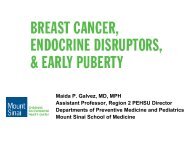
![February 3, 2013 [PDF] - Mount Sinai Hospital](https://img.yumpu.com/50584982/1/190x245/february-3-2013-pdf-mount-sinai-hospital.jpg?quality=85)
![March 18, 2012 [PDF] - Mount Sinai Hospital](https://img.yumpu.com/50462098/1/190x245/march-18-2012-pdf-mount-sinai-hospital.jpg?quality=85)
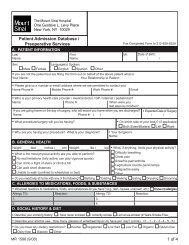
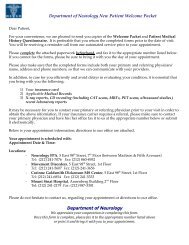
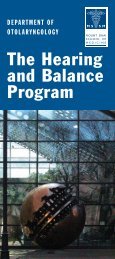
![Partners Program Guide [PDF] - Mount Sinai Hospital](https://img.yumpu.com/49411954/1/190x245/partners-program-guide-pdf-mount-sinai-hospital.jpg?quality=85)
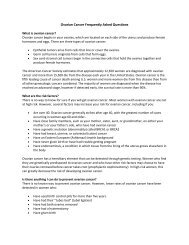
![March 19 - April 1, 2012 [PDF] - Mount Sinai Hospital](https://img.yumpu.com/48990923/1/190x245/march-19-april-1-2012-pdf-mount-sinai-hospital.jpg?quality=85)
![PGY-1 Residency Application [PDF] - Mount Sinai Hospital](https://img.yumpu.com/48577701/1/190x245/pgy-1-residency-application-pdf-mount-sinai-hospital.jpg?quality=85)
